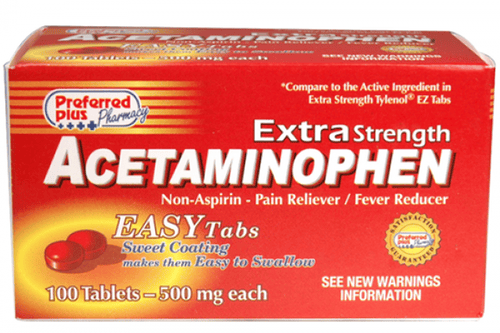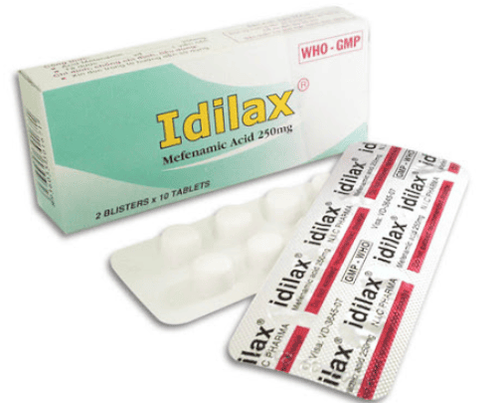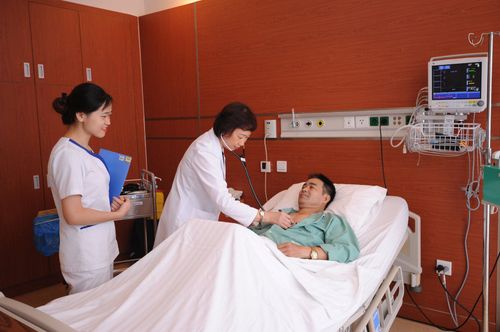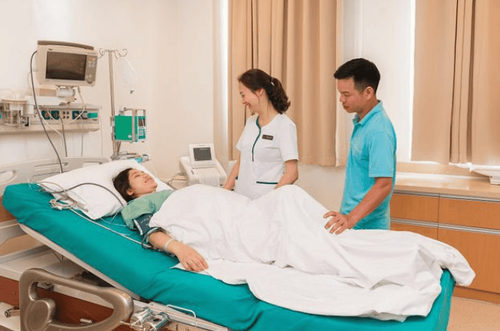This is an automatically translated article.
The article was professionally consulted by Specialist Doctor I Ho Quoc Tuan - Anesthesiologist - General Surgery Department - Vinmec Nha Trang International General Hospital. Doctor Quoc Tuan has many years of experience in the field of Anesthesia - Resuscitation.Post-operative pain relief includes many different methods and plays an important role in helping patients have a better quality of life, early post-operative recovery.
1. What is postoperative pain?
Postoperative pain is a pain response due to surgical intervention and occurs after surgery. The degree of postoperative pain depends on the nature and extent of surgery, surgical technique and patient tolerance. In general, laparoscopic interventions are usually painless or even painless. In more severe cases of surgery, pain is often constant for the first few days. In addition, the degree of postoperative pain also depends on the following factors:Surgical location: Upper thoracic and abdominal surgery > lower abdominal surgery > peripheral surgery and superficial surgery. The duration of pain of different sites is also different, which is thoracic surgery (4 days), upper abdominal surgery (3 days), lower abdominal surgery (2 days), peripheral surgery and superficial surgery (1 day). day); Individual patient: 15% of patients have no or very little pain, 15% of patients have severe pain, and pain management is often insufficient to make the patient more comfortable. Post-operative pain restricts the patient's movement, increases the risk of hematoma, embolism and seriously affects wound care as well as rehabilitation training after surgery.
2. Methods of assessing pain level after surgery
Use EVA ruler (Echelle visuelle Analogue): A ruler with 2 sides, 10cm in length, sealed at both ends. On the side with no number, one end says "no pain", the other says "unbearable pain", on the ruler there is a movable pointer to indicate the level of pain felt by the patient. The other side has a scale of 0 - 100, the first 0 corresponds to "no pain", the first 100 corresponds to "unbearable pain". This is the simplest instrument for assessing pain. Patients are assigned to take painkillers when the pain value is 30 or more; Using a scoring scale: The patient gives himself a number corresponding to the level of pain he or she feels, a number in the range of 0 - 100. Number 0 is patient with no pain, number 100 is patient with unbearable pain; Using a scale of severity: The scale has values of 0 - no pain, level 1 - mild pain, level 2 - moderate pain, and level 3 - severe pain.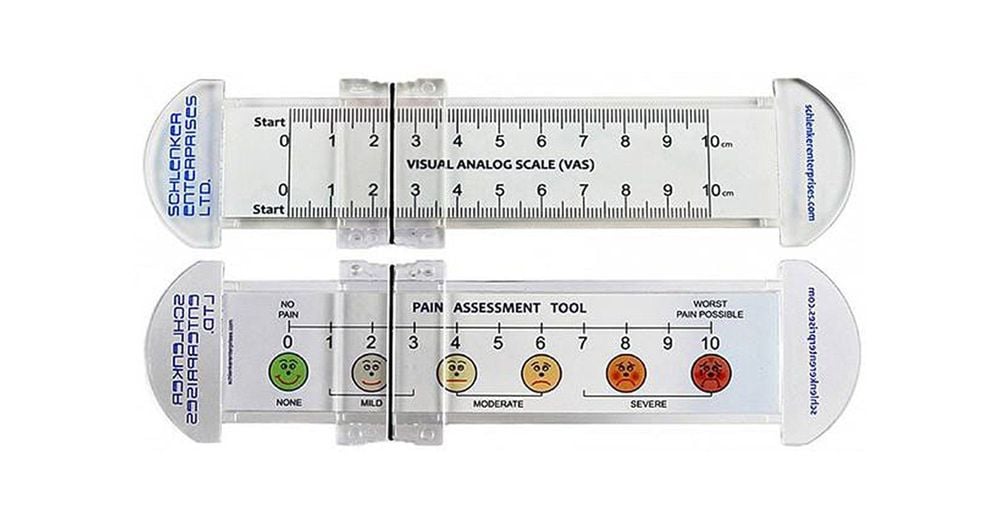
3. The role of pain relief after surgery
Pain relief after surgery is a treatment measure that brings many benefits to patients such as:Helping patients feel comfortable physically and mentally; Help the patient regain balance of mind - physiology; Improve the quality of treatment: Help the wound heal quickly, reduce the risk of post-operative wound superinfection, mobilize earlier, reduce the risk of embolism, shorten the hospital stay; Help patients recover soon after surgery, can take care of themselves; Patients soon practice rehabilitation; Avoid progression to chronic pain; Has a humanitarian meaning.
4. Methods of pain relief after surgery
The choice of postoperative pain reliever technique depends on the pain level, pain location, pain at rest or during movement, patient history, time of rehabilitation exercise,... The following pain relief methods Commonly used surgery is:Oral: Using pain relievers not in the morphine family. Prioritize medication when restoring bowel movements, often used for patients undergoing surgery on the same day. Patients can use paracetamol, non-steroidal anti-inflammatory drugs (NSAIDs - better than paracetamol in maxillofacial surgery, osteoarthritis, obstetrics but with many side effects), a combination of paracetamol and NSAIDs,... The use of drugs must strictly follow the doctor's instructions; Oral use of drugs: Intravenous use of non-morphine pain relievers (including paracetamol and NSAIDs); The subcutaneous route using drugs of the morphine family and the intramuscular route should be abandoned because of post-injection pain and post-injection hematoma due to post-operative anticoagulation. Drug dosage, type of drug, route of administration and duration of medication should be strictly adhered to as prescribed by the doctor; Injecting drugs through an epidural catheter: More effective pain relief than intravenous and subcutaneous administration. Morphine may be used alone or in combination with a lipid-soluble morphine with local anesthetic and/or clonidine. The type of drug and dose depends on the doctor's prescription for each specific case; Catheter for anesthesia of the nerve plexus or nerve trunk: Applied in the extremities, often inserting catheters for repeated injection or continuous infusion to prolong the postoperative analgesia; Drug injection into the joint socket: Performed at the end of arthroscopic knee or shoulder surgery, after draining the fluid; Anal medication: The type and dose of the drug must be strictly adhered to as prescribed by the doctor. All pain relief methods have advantages and limitations. Doctors need to consider choosing the right postoperative pain relief method for the patient.
5. Pain relief program after ERAS surgery at Vinmec Times City
Vinmec Times City International Hospital implemented a program to enhance early recovery after ERAS (Enhanced Recovery After Surgery). ERAS is the method of patient care before, during and after surgery with the coordination of many specialties such as Anesthesiology, Nutrition, Rehabilitation, Clinical Pharmacology, Surgery, Nursing care,. .. to help patients recover soon after surgery. The goal of ERAS is to provide comprehensive care to patients in order to reduce hospital stay, improve treatment quality, reduce costs, and reduce complication rates for patients. In fact, ERAS helps to reduce the time of care by 30%, reducing complications after surgery by up to 50% for patients.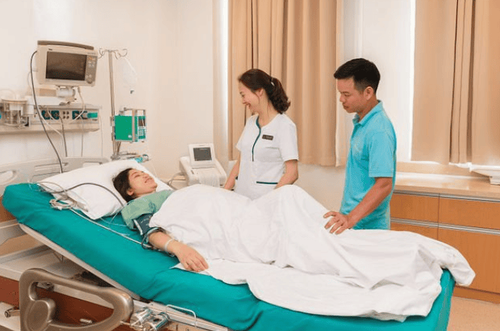
Open-heart surgery: Anesthesia of the erector plane (ESP) under ultrasound guidance. With this method, the doctor inserts a catheter under the spine next to the spine in the back to inhibit pain signals before it is transmitted to the spine. This is a modern, uncomplicated postoperative analgesia technique, shortening the time of active recovery, eliminating the risk of postoperative pain and chronic pain for 96% of patients assigned to perform open heart surgery. ; Caesarean section: After a cesarean section, women are numbed with an ultrasound machine to relieve pain, so there is no need to use morphine to relieve pain even when exercising and performing tasks such as taking care of the baby. , body hygiene,... Besides, when the effect of anesthetic during surgery diminishes, the doctor will continue to anesthetize the lumbar square muscle on both sides to block the path of pain signals before surgery. to the spinal cord and to the brain, thereby reducing post-operative pain for pregnant women. In addition, Vinmec also implements the method of neuraxial anesthesia after birth with epidural anesthesia. With these methods, women quickly recover after surgery, bowel movements soon return to normal and reduce the risk of chronic pain after surgery; Cancer surgery: Vinmec Times City Hospital deploys a robotic laparoscopic surgery method that causes less pain due to limited trauma, has high aesthetics, reduces the need for pain medication after surgery, shortens the time hospital stay, helping patients feel more comfortable. The program to enhance recovery after surgery at Vinmec Times City will be specifically consulted by medical staff for patients before surgery so that they can safely participate in the treatment and post-operative care. Patients are optimized nutrition, applying standard anesthetic - pain relief regimen to recover faster.
Please dial HOTLINE for more information or register for an appointment HERE. Download MyVinmec app to make appointments faster and to manage your bookings easily.






